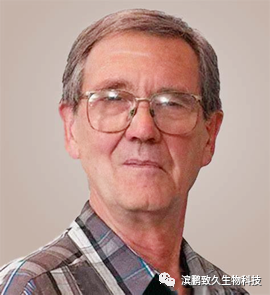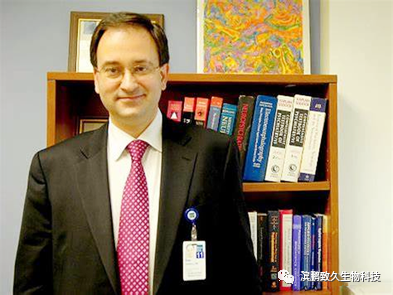This article is a translation and reprint from
Neurophotonics. July 2016; 3(3): 031404.
Published online on March 4, 2016. doi: 10.1117/1.NPh.3.3.031404
PMCID: PMC4777909
PMID: 26989758
A Review of Transcranial Photobiomodulation for Major Depressive Disorder: Targeting Brain Metabolism, Inflammation, Oxidative Stress, and Neurogenesis
Paolo Cassano,a,b,* Samuel R. Petrie,a Michael R. Hamblin,c,d,e Theodore A. Henderson,f,g and Dan V. Iosifescuh,i
This is the fourth part of a four-part series.
Acknowledgments
The authors would like to thank Dr. Larry Morris for sharing his original data on depression outcomes in TBI subjects for additional analysis of the suicidal tendencies proposed in this article.

Financial Disclosure: Dr. P. Cassano’s salary was supported by the Harvard Department of Psychiatry (Dupont-Warren Fellowship and Livingston Award), the Brain and Behavior Research Foundation (NARSAD Young Investigator Award), and unrestricted funding from Photothera Inc. Drug donations from TEVA. Travel reimbursements from Pharmacia-Upjohn. Dr. M. Hamblin was supported by NIH grant R01AI050875, Air Force Office of Scientific Research grant FA9550-13-1-0068, and U.S. Army Medical Research Acquisition Activity grant W81XWH-09-1-0514, and was awarded grant W81XWH-13-2-0067 by the U.S. Army Medical Research and Materiel Command. Research funding and consulting fees from Photothera Inc. Transdermal Cap Inc. Scientific Advisory Board (for LLLT for hair regeneration). Dr. D. Iosifescu: Over the past three years, he has served as a consultant for Avanir, CNS Response, INSYS Therapeutics, Lundbeck, Otsuka, Servier, Sunovion, and has received research support from Alkermes, Astra Zeneca, Brainsway, Euthymics, Neosync, Roche, and Shire through Mount Sinai. Dr. Theodore A. Henderson is the president of the clinical service company The Synaptic Space. He is the president of the clinical service organization Theodore Henderson, Inc. He is a co-owner of the clinical service organization Neuro-Luminance. He is the president of the International Society for Applied Neuroimaging. He is the vice president of the non-profit foundation Neuro-Laser Foundation. Mr. S. Petrie has no financial disclosures to report. He is the president of the clinical service company Theodore Henderson, Inc. He is a co-owner of the clinical service organization Neuro-Luminance. He is the president of the International Society for Applied Neuroimaging. He is the vice president of the non-profit foundation Neuro-Laser Foundation. Mr. S. Petrie has no financial disclosures to report. He is the president of the clinical service company Theodore Henderson, Inc. He is a co-owner of the clinical service organization Neuro-Luminance. He is the president of the International Society for Applied Neuroimaging. He is the vice president of the non-profit foundation Neuro-Laser Foundation. Mr. S. Petrie has no financial disclosures to report.
Biographies

Paolo Cassano, M.D., Ph.D., is the principal investigator of the Anxiety and Traumatic Stress Disorders Center and the Depression Clinical and Research Program at Massachusetts General Hospital; and an assistant professor at Harvard Medical School. He specializes in light modulation for psychiatric disorders. In 2015, his work on light modulation was recognized by the Boston Globe as one of the breakthroughs for the most challenging medical conditions. He has also been interviewed by CNN and The Washington Post.
Samuel R. Petrie is the administrative research coordinator for the Depression Clinical and Research Program at Massachusetts General Hospital. His primary research interest is alternative therapies for mood and anxiety disorders.

Michael R. Hamblin, Ph.D., is a principal investigator at the Wellman Center for Photomedicine at Massachusetts General Hospital, an associate professor at Harvard Medical School, and an affiliated faculty member at HST-MIT. His research interests include photodynamic therapy and photobiomodulation. He has published over 300 peer-reviewed articles and 20 textbooks. He is an associate editor for nine journals of NIH research and was honored as an SPIE Fellow in 2011.

Theodore A. Henderson, M.D., is the president of the clinical service company The Synaptic Space and Dr. Theodore Henderson, Inc. He is a co-founder of the clinical service organization Neuro-Luminance and the non-profit foundation Neuro-Laser Foundation. He is the president of the International Society for Applied Neuroimaging. He has published articles on neuroimaging, psychopharmacology, dementia, photobiomodulation, and traumatic brain injury. He has served as an editor or guest editor for many journals. His and his colleagues’ work was recently recognized by Discover magazine as one of the “Top Science Stories” of 2015.

Dan V. Iosifescu, M.D., M.S., is the director of the Adult Psychopharmacology Program at the Icahn School of Medicine at Mount Sinai and an associate professor of psychiatry and neuroscience. His research focuses on the treatment of mood disorders (such as ketamine and magnetic stimulation) and neuroimaging (MRI, MRS) and neurophysiological (quantitative EEG) studies of brain abnormalities in mood disorders. He has authored over 125 peer-reviewed articles and 14 book chapters.
References
1. Kochevar I., Pathak M., Parrish J., “Photophysics, photochemistry, and photobiology,” in Fitzpatrick’s Dermatology in General Medicine, pp. 220–229, McGraw-Hill, New York: (1999).
2. Schroeder P., et al., “Photoprotection beyond ultraviolet radiation–effective sun protection has to include protection against infrared A radiation-induced skin damage,” Skin Pharmacol. Physiol. 23(1), 15–17 (2010). 10.1159/000257259
3. Ferraresi C., Hamblin M. R., Parizotto N. A., “Low-level laser (light) therapy (LLLT) on muscle tissue: performance, fatigue and repair benefited by the power of light,” Photonics Lasers Med. 1(4), 267–286 (2012). 10.1515/plm-2012-0032
4. Chaves M. E., et al., “Effects of low-power light therapy on wound healing: LASER x LED,” An. Bras. Dermatol. 89(4), 616–623 (2014). 10.1590/abd1806-4841.20142519
5. Harkless L. B., et al., “Improved foot sensitivity and pain reduction in patients with peripheral neuropathy after treatment with monochromatic infrared photo energy—MIRE,” J. Diabetes Complications 20(2), 81–87 (2006). 10.1016/j.jdiacomp.2005.06.002
6. Allais G., et al., “Non-pharmacological approaches to chronic headaches: transcutaneous electrical nerve stimulation, laser therapy and acupuncture in transformed migraine treatment,” Neurol. Sci. 24(Suppl. 2), S138–S142 (2003).
7. Hersant B., et al., “Current indications of low-level laser therapy in plastic surgery: a review,” Photomed. Laser Surg. 33(5), 283–297 (2015). 10.1089/pho.2014.3822
8. Russell B. A., Kellett N., Reilly L. R., “A study to determine the efficacy of combination LED light therapy (633 nm and 830 nm) in facial skin rejuvenation,” J. Cosmet. Laser Ther. 7(3–4), 196–200 (2005).
9. Delpy D. T., et al., “Cerebral monitoring in newborn infants by magnetic resonance and near infrared spectroscopy,” Scand. J. Clin. Lab. Invest. Suppl. 47(188), 9–17 (1987). 10.1080/00365518709168165
10. Lapchak P. A., et al., “Transcranial near-infrared light therapy improves motor function following embolic strokes in rabbits: an extended therapeutic window study using continuous and pulse frequency delivery modes,” Neuroscience 148(4), 907–914 (2007). 10.1016/j.neuroscience.2007.07.002
11. Lapchak P. A., Wei J., Zivin J. A., “Transcranial infrared laser therapy improves clinical rating scores after embolic strokes in rabbits,” Stroke 35(8), 1985–1988 (2004). 10.1161/01.STR.0000131808.69640.b7
12. Oron A., et al., “Low-level laser therapy applied transcranially to rats after induction of stroke significantly reduces long-term neurological deficits,” Stroke 37(10), 2620–2624 (2006). 10.1161/01.STR.0000242775.14642.b8
13. Detaboada L., et al., “Transcranial application of low-energy laser irradiation improves neurological deficits in rats following acute stroke,” Lasers Surg. Med. 38(1), 70–73 (2006). 10.1002/lsm.20256
14. Lampl Y., “Laser treatment for stroke,” Expert Rev Neurother. 7(8), 961–965 (2007). 10.1586/14737175.7.8.961
15. Hacke W., et al., “Transcranial laser therapy in acute stroke treatment results of neurothera effectiveness and safety trial 3, a phase III clinical end point device trial,” Stroke 45(11), 3187–3193 (2014). 10.1161/STROKEAHA.114.005795
16. Lampl Y., et al., “Infrared laser therapy for ischemic stroke: a new treatment strategy results of the neurothera effectiveness and safety trial-1 (NEST-1),” Stroke 38(6), 1843–1849 (2007). 10.1161/STROKEAHA.106.478230
17. Zivin J. A., et al., “Effectiveness and safety of transcranial laser therapy for acute ischemic stroke,” Stroke 40(4), 1359–1364 (2009). 10.1161/STROKEAHA.109.547547
18. Ando T., et al., “Comparison of therapeutic effects between pulsed and continuous wave 810-nm wavelength laser irradiation for traumatic brain injury in mice,” PLoS One 6(10), e26212–e26220 (2011). 10.1371/journal.pone.0026212
19. Huang Y. Y., et al., “Transcranial low-level laser (light) therapy for traumatic brain injury,” J. Biophotonics 5, 827–837 (2012). 10.1002/jbio.201200077
20. Xuan W., et al., “Low-level laser therapy for traumatic brain injury in mice increases brain derived neurotrophic factor (BDNF) and synaptogenesis,” J. Biophotonics 9999(9999) 502–511 (2014). 10.1002/jbio.201400069
21. Xuan W., et al., “Transcranial low-level laser therapy enhances learning, memory, and neuroprogenitor cells after traumatic brain injury in mice,” J. Biomed. Opt. 19(10), 108003 (2014). 10.1117/1.JBO.19.10.108003
22. Xuan W., et al., “Transcranial low-level laser therapy improves neurological performance in traumatic brain injury in mice: effect of treatment repetition regimen,” PLoS One 8(1), e53454 (2013). 10.1371/journal.pone.0053454
23. Naeser M. A., Hamblin M. R., “Potential for transcranial laser or LED therapy to treat stroke, traumatic brain injury, and neurodegenerative disease,” Photomed. Laser Surg. 29(7), 443–446 (2011). 10.1089/pho.2011.9908
24. Naeser M. A., et al., “Improved cognitive function after transcranial, light-emitting diode treatments in chronic, traumatic brain injury: two case reports,” Photomed. Laser Surg. 29(5), 351–358 (2011). 10.1089/pho.2010.2814
25. Naeser M. A., et al., “Significant improvements on cognitive performance post-transcranial, red/near-infrared LED treatments in chronic, mild TBI: open-protocol study,” J. Neurotrauma 31(11), 1008–1017 (2014). 10.1089/neu.2013.3244
26. Purushothuman S., et al., “The impact of near-infrared light on dopaminergic cell survival in a transgenic mouse model of parkinsonism,” Brain Res. 1535, 61–70 (2013). 10.1016/j.brainres.2013.08.047
27. De Taboada L., et al., “Transcranial laser therapy attenuates amyloid-beta peptide neuropathology in amyloid-beta protein precursor transgenic mice,” J. Alzheimers Dis. 23(3), 521–535 (2011). 10.3233/JAD-2010-100894
28. Kim E. A., et al., “Macular degeneration in an arc welder,” Ind. Health, 45(2), 371–373 (2007).
29. Moore C. M., et al., “Lower levels of nucleoside triphosphate in the basal ganglia of depressed subjects: a phosphorus-31 magnetic resonance spectroscopy study,” Am. J. Psychiatry 154(1), 116–118 (1997). 10.1176/ajp.154.1.116
30. Volz H.-P., et al., “31P magnetic resonance spectroscopy in the frontal lobe of major depressed patients,” Eur. Arch. Psychiatry Clin. Neurosci. 248(6), 289–295 (1998). 10.1007/s004060050052
31. Renshaw P. F., et al., “Multinuclear magnetic resonance spectroscopy studies of brain purines in major depression,” Am. J. Psychiatry 158(12), 2048–2055 (2001). 10.1176/appi.ajp.158.12.2048
32. Iosifescu D. V., et al., “Brain bioenergetics and response to triiodothyronine augmentation in major depressive disorder,” Biol. Psychiatry 63(12), 1127–1134 (2008). 10.1016/j.biopsych.2007.11.020
33. Videbech P., “PET measurements of brain glucose metabolism and blood flow in major depressive disorder: a critical review,” Acta Psychiatr. Scand. 101(1), 11–20 (2000). 10.1034/j.1600-0447.2000.101001011.x
34. Mayberg H. S., et al., “Regional metabolic effects of fluoxetine in major depression: serial changes and relationship to clinical response,” Biol. Psychiatry 48(8), 830–843 (2000). 10.1016/S0006-3223(00)01036-2
35. Drevets W. C., Bogers W., Raichle M.E., “Functional anatomical correlates of antidepressant drug treatment assessed using PET measures of regional glucose metabolism,” Eur. Neuropsychopharmacol. 12(6), 527–544 (2002). 10.1016/S0924-977X(02)00102-5
36. Kennedy S., et al., “Differences in brain glucose metabolism between responders to CBT and venlafaxine in a 16-week randomized controlled trial,” Am. J. Psychiatry 164(5), 778–788 (2007). 10.1176/ajp.2007.164.5.778
37. Yu W., et al., “Photomodulation of oxidative metabolism and electron chain enzymes in rat liver mitochondria,” Photochem. Photobiol. 66(6), 866–871 (1997). 10.1111/j.1751-1097.1997.tb03239.x
38. Mochizuki-Oda N., et al., “Effects of near-infra-red laser irradiation on adenosine triphosphate and adenosine diphosphate contents of rat brain tissue,” Neurosci. Lett. 323(3), 207–210 (2002). 10.1016/S0304-3940(02)00159-3
39. Oron U., et al., “Ga-As (808 nm) laser irradiation enhances ATP production in human neuronal cells in culture,” Photomed. Laser Surg. 25(3), 180–182 (2007). 10.1089/pho.2007.2064
40. Schiffer F., et al., “Psychological benefits 2 and 4 weeks after a single treatment with near infrared light to the forehead: a pilot study of 10 patients with major depression and anxiety,” Behav. Brain Funct. 5, 46 (2009). 10.1186/1744-9081-5-46
41. Shelton R., et al., “Altered expression of genes involved in inflammation and apoptosis in frontal cortex in major depression,” Mol. Psychiatry 16(7), 751–762 (2010). 10.1038/mp.2010.52
42. Simon N., et al., “A detailed examination of cytokine abnormalities in major depressive disorder,” Eur. Neuropsychopharmacol. 18(3), 230–233 (2008). 10.1016/j.euroneuro.2007.06.004
43. Raison C. L., Capuron L., Miller A. H., “Cytokines sing the blues: inflammation and the pathogenesis of depression,” Trends Immunol. 27(1), 24–31 (2006). 10.1016/j.it.2005.11.006
44. Goshen I., et al., “Brain interleukin-1 mediates chronic stress-induced depression in mice via adrenocortical activation and hippocampal neurogenesis suppression,” Mol. Psychiatry 13(7), 717–728 (2007). 10.1038/sj.mp.4002055
45. Sasayama D., et al., “Increased cerebrospinal fluid interleukin-6 levels in patients with schizophrenia and those with major depressive disorder,” J. Psychiatr. Res. 47(3), 401–406 (2013). 10.1016/j.jpsychires.2012.12.001
46. Lindqvist D., et al., “Interleukin-6 is elevated in the cerebrospinal fluid of suicide attempters and related to symptom severity,” Biol. Psychiatry 66(3), 287–292 (2009). 10.1016/j.biopsych.2009.01.030
47. Levine J., et al., “Cerebrospinal cytokine levels in patients with acute depression,” Neuropsychobiology 40(4), 171–176 (1999). 10.1159/000026615
48. Araki H., et al., “Reduction of interleukin-6 expression in human synoviocytes and rheumatoid arthritis rat joints by linear polarized near infrared light (Superlizer) irradiation,” Laser Ther. 20(4), 293 (2011). 10.5978/islsm.11-OR_01
49. Yamaura M., et al., “Low level light effects on inflammatory cytokine production by rheumatoid arthritis synoviocytes,” Lasers Surg. Med. 41(4), 282–290 (2009). 10.1002/lsm.20766
50. Khuman J., et al., “Low-level laser light therapy improves cognitive deficits and inhibits microglial activation after controlled cortical impact in mice,” J. Neurotrauma 29(2), 408–417 (2012). 10.1089/neu.2010.1745
51. Barolet D., Boucher A., “Radiant near infrared light emitting diode exposure as skin preparation to enhance photodynamic therapy inflammatory type acne treatment outcome,” Lasers Surg. Med. 42(2), 171–178 (2010). 10.1002/lsm.20886
52. Sarandol A., et al., “Major depressive disorder is accompanied with oxidative stress: short‐term antidepressant treatment does not alter oxidative–antioxidative systems,” Hum. Psychopharmacol. 22(2), 67–73 (2007). 10.1002/hup.829
53. Eren İ., Nazıroğlu M., Demirdaş A., “Protective effects of lamotrigine, aripiprazole and escitalopram on depression-induced oxidative stress in rat brain,” Neurochem. Res. 32(7), 1188–1195 (2007). 10.1007/s11064-007-9289-x
54. Hayes J. D., McLellan L. I., “Glutathione and glutathione-dependent enzymes represent a co-ordinately regulated defence against oxidative stress,” Free Radical Res. 31(4), 273–300 (1999). 10.1080/10715769900300851
55. Shungu D. C., et al., “Increased ventricular lactate in chronic fatigue syndrome. III. Relationships to cortical glutathione and clinical symptoms implicate oxidative stress in disorder pathophysiology,” NMR Biomed. 25(9), 1073–1087 (2012). 10.1002/nbm.2772
56. Del Rio D., Stewart A. J., Pellegrini N., “A review of recent studies on malondialdehyde as toxic molecule and biological marker of oxidative stress,” Nutr. Metab. Cardiovasc. Dis. 15(4), 316–328 (2005). 10.1016/j.numecd.2005.05.003
57. Tainer J. A., et al., “Structure and mechanism of copper, zinc superoxide dismutase,” Nature 306, 284–287 (1983). 10.1038/306284a0
58. Ozcan M. E., et al., “Antioxidant enzyme activities and oxidative stress in affective disorders,” Int. Clin. Psychopharmacol. 19(2), 89–95 (2004). 10.1097/00004850-200403000-00006
59. Chelikani P., Fita I., Loewen P., “Diversity of structures and properties among catalases,” Cell. Mol. Life Sci. 61(2), 192–208 (2004). 10.1007/s00018-003-3206-5
60. Shi S., et al., “Protective effect of nitric oxide against oxidative stress under ultraviolet-B radiation,” Nitric Oxide 13(1), 1–9 (2005). 10.1016/j.niox.2005.04.006
61. Wink D. A., et al., “Nitric oxide protects against alkyl peroxide-mediated cytotoxicity: further insights into the role nitric oxide plays in oxidative stress,” Arch. Biochem. Biophys. 319(2), 402–407 (1995). 10.1006/abbi.1995.1310
62. Eren İ., et al., “Venlafaxine modulates depression-induced oxidative stress in brain and medulla of rat,” Neurochem. Res. 32(3), 497–505 (2007). 10.1007/s11064-006-9258-9
63. Rizzi C. F., et al., “Effects of low-level laser therapy (LLLT) on the nuclear factor (NF)‐κB signaling pathway in traumatized muscle,” Lasers Surg. Med. 38(7), 704–713 (2006). 10.1002/lsm.20371
64. Mungrue I. N., Husain M, Stewart D. J., “The role of NOS in heart failure: lessons from murine genetic models,” Heart Failure Rev. 7(4), 407–422 (2002). 10.1023/A:1020762401408
65. Chludzińska L., et al., “Near-infrared radiation protects the red cell membrane against oxidation,” Blood Cells Mol. Dis. 35(1), 74–79 (2005). 10.1016/j.bcmd.2005.04.003
66. Dranovsky A., Hen R., “Hippocampal neurogenesis: regulation by stress and antidepressants,” Biol. Psychiatry 59(12), 1136–1143 (2006). 10.1016/j.biopsych.2006.03.082
67. Duman R. S., Monteggia L. M., “A neurotrophic model for stress-related mood disorders,” Biol. Psychiatry 59(12), 1116–1127 (2006). 10.1016/j.biopsych.2006.02.013
68. Kempermann G., Kronenberg G., “Depressed new neurons?—adult hippocampal neurogenesis and a cellular plasticity hypothesis of major depression,” Biol. Psychiatry 54(5), 499–503 (2003). 10.1016/S0006-3223(03)00319-6
69. Jacobs B., Van Praag H., Gage F., “Adult brain neurogenesis and psychiatry: a novel theory of depression,” Mol. Psychiatry 5(3), 262–269 (2000). 10.1038/sj.mp.4000712
70. Campbell S., MacQueen G., “The role of the hippocampus in the pathophysiology of major depression,” J. Psychiatry Neurosci. 29(6), 417–426 (2004).
71. Drew M. R., Hen R., “Adult hippocampal neurogenesis as target for the treatment of depression,” CNS Neurol. Disord. Drug Targets 6(3), 205–218 (2007).
72. Sahay A., Hen R., “Adult hippocampal neurogenesis in depression,” Nat. Neurosci. 10(9), 1110–1115 (2007). 10.1038/nn1969
73. Vollmayr B., Mahlstedt M. M., Henn F. A., “Neurogenesis and depression: what animal models tell us about the link,” Eur. Arch. Psychiatry Clin. Neurosci. 257(5), 300–303 (2007). 10.1007/s00406-007-0734-2
74. David D. J., et al., “Neurogenesis-dependent and -independent effects of fluoxetine in an animal model of anxiety/depression,” Neuron 62(4), 479–493 (2009). 10.1016/j.neuron.2009.04.017
75. Santarelli L., et al., “Requirement of hippocampal neurogenesis for the behavioral effects of antidepressants,” Science 301(5634), 805–809 (2003). 10.1126/science.1083328
76. Giuliani A., et al., “Low infra red laser light irradiation on cultured neural cells: effects on mitochondria and cell viability after oxidative stress,” BMC Complement. Altern. Med. 9(1), 8 (2009). 10.1186/1472-6882-9-8
77. Rojas J. C., et al., “Neuroprotective effects of near-infrared light in an in vivo model of mitochondrial optic neuropathy,” J. Neurosci. 28(50), 13511–13521 (2008). 10.1523/JNEUROSCI.3457-08.2008
78. Eells J., et al., “Therapeutic photobiomodulation for methanol-induced retinal toxicity,” Proc. Natl. Acad. Sci. U. S. A. 100(6), 3439–3444 (2003). 10.1073/pnas.0534746100
79. Wong-Riley M. T., et al., “Photobiomodulation directly benefits primary neurons functionally inactivated by toxins role of cytochrome c oxidase,” J. Biol. Chem. 280(6), 4761–4771 (2005). 10.1074/jbc.M409650200
80. Xuan W., et al., “Transcranial low-level laser therapy improves neurological performance in traumatic brain injury in mice: effect of treatment repetition regimen,” PLoS One 8(1), e53454 (2013). 10.1371/journal.pone.0053454
81. Wu Q., et al., “Low‐level laser therapy for closed‐head traumatic brain injury in mice: effect of different wavelengths,” Lasers Surg. Med. 44(3), 218–226 (2012). 10.1002/lsm.22003
82. Oron A., et al., “Low-level laser therapy applied transcranially to mice following traumatic brain injury significantly reduces long-term neurological deficits,” J. Neurotrauma 24(4), 651–656 (2007). 10.1089/neu.2006.0198
83. Michalikova S., et al., “Emotional responses and memory performance of middle-aged CD1 mice in a 3D maze: effects of low infrared light,” Neurobiol. Learning Mem. 89(4), 480–488 (2008). 10.1016/j.nlm.2007.07.014
84. Chung H., et al., “The nuts and bolts of low-level laser (light) therapy,” Ann. Biomed. Eng. 40(2), 516–533 (2012). 10.1007/s10439-011-0454-7
85. Tedford C. E., et al., “Quantitative analysis of transcranial and intraparenchymal light penetration in human cadaver brain tissue,” Lasers Surg. Med. 47(4), 312–322 (2015). 10.1002/lsm.22343
86. Henderson T. A., Morries L. D., “Near-infrared photonic energy penetration– can infrared phototherapy effectively reach the human brain?” Neuropsychiatr. Dis. Treat. 11, 2191–2208 (2015). 10.2147/NDT.S78182
87. Jagdeo J. R., et al., “Transcranial red and near infrared light transmission in a cadaveric model,” PLoS One 7(10), e47460 (2012). 10.1371/journal.pone.0047460
88. Barrett D., Gonzalez-Lima F., “Transcranial infrared laser stimulation produces beneficial cognitive and emotional effects in humans,” Neuroscience 230, 13–23 (2013). 10.1016/j.neuroscience.2012.11.016
89. Cassano P., et al., “Near-infrared transcranial radiation for major depressive disorder: proof of concept study,” Psychiatry J. 2015, 352979 (2015). 10.1155/2015/352979
90. Henderson T. A., Morries L. D., “SPECT perfusion imaging demonstrates improvement of TBI with transcranial near infrared laser phototherapy,” Adv. Mind Body Med. 29, 27–33 (2015).
91. Morries L. D., Cassano P., Henderson T. A., “Treatments for traumatic brain injury with emphasis on transcranial near infrared laser phototherapy,” Neuropsychiatr. Dis. Treat. 11, 2159–2175 (2015). 10.2147/NDT.S65809
92. Zivin J., et al., “NeuroThera® efficacy and safety trial–3 (NEST‐3): a double‐blind, randomized, sham‐controlled, parallel group, multicenter, pivotal study to assess the safety and efficacy of transcranial laser therapy with the NeuroThera® Laser System for the treatment of acute ischemic stroke within 24 h of stroke onset,” Int. J. Stroke 9(7), 950–955 (2012). 10.1111/j.1747-4949.2012.00896.x
93. Naeser M. A., et al., “Significant improvements in cognitive performance post-transcranial, red/near-infrared light-emitting diode treatments in chronic, mild traumatic brain injury: open-protocol study,” J. Neurotrauma 31(11), 1008–1017 (2014). 10.1089/neu.2013.3244
94. Naeser M. A., et al., “Improved cognitive function after transcranial, light-emitting diode treatments in chronic, traumatic brain injury: two case reports,” Photomed. Laser Surg. 29(5), 351–358 (2011). 10.1089/pho.2010.2814
95. Rojas J. C., Bruchey A. K., Gonzalez-Lima F., “Low-level light therapy improves cortical metabolic capacity and memory retention,” J. Alzheimers Dis. 32(3), 741–752 (2012). 10.3233/JAD-2012-120817
96. Zhao J., et al., “Red light and the sleep quality and endurance performance of Chinese female basketball players,” J. Athl. Train. 47(6), 673 (2012). 10.4085/1062-6050-47.6.08
97. Keilp J. G., et al., “Neuropsychological dysfunction in depressed suicide attempters,” Am. J. Psychiatry 158(5), 735–741 (2001). 10.1176/appi.ajp.158.5.735
98. Kaptchuk T. J., et al., “Do medical devices have enhanced placebo effects?” J. Clin. Epidemiol. 53(8), 786–792 (2000). 10.1016/S0895-4356(00)00206-7
99. Posternak M. A., Zimmerman M., “Therapeutic effect of follow-up assessments on antidepressant and placebo response rates in antidepressant efficacy trials Meta-analysis,” Br. J. Psychiatry 190(4), 287–292 (2007). 10.1192/bjp.bp.106.028555